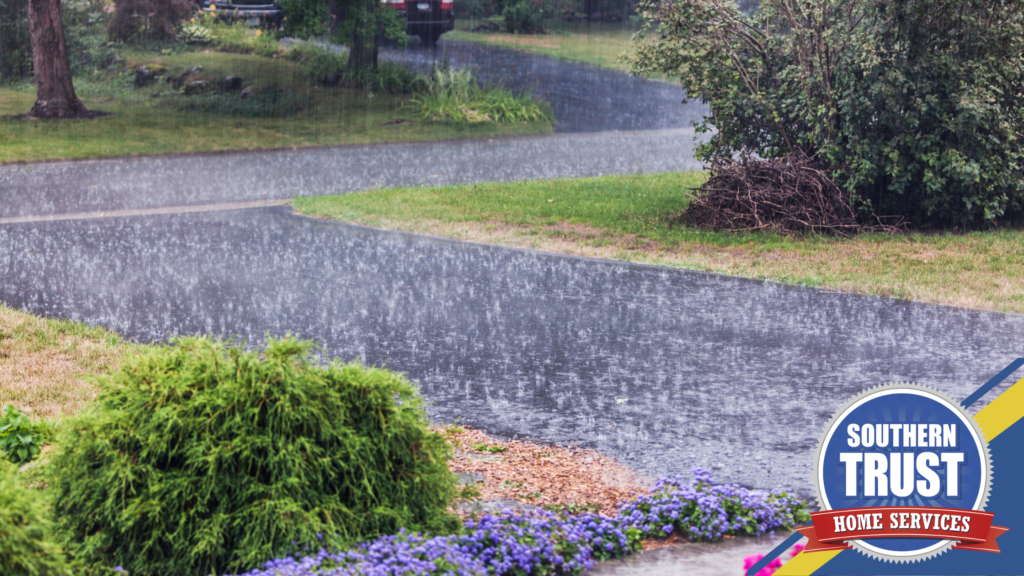As the seasons change and we wave goodbye to the crisp winter air, welcoming the freshness of spring, it’s important not to overlook the challenges that come with this vibrant season. Spring showers, while essential for reviving the greenery and filling our gardens with life, can also pose a significant threat to our homes, particularly to those parts that are underground or at ground level. The hero that often goes unnoticed in protecting our basements and foundations from the perils of flooding is the sump pump. In this article, I’ll delve into the critical role of a sump pump and why having a reliable one is paramount for any homeowner.
Understanding the Importance of a Sump Pump
A sump pump may not be the most talked-about device in a home, but its role is critical. It’s essentially the guardian of your basement, working tirelessly to prevent water from accumulating and causing damage. The importance of a sump pump becomes particularly evident during the rainy season when the risk of flooding is at its peak.
The presence of a sump pump in a home with a basement is almost non-negotiable. It’s the first line of defense against water intrusion, which can lead to a host of problems, including mold growth, structural damage, and the deterioration of valuable belongings stored in the basement.
Investing in a sump pump isn’t just about avoiding immediate inconvenience; it’s about the long-term protection of your home. By ensuring that excess water is efficiently removed from your property, a sump pump safeguards the integrity of your house’s foundation and infrastructure, which are crucial for maintaining its value and safety.
How a Sump Pump Works to Prevent Flooding
The function of a sump pump is quite straightforward, yet ingenious. At its core, a sump pump is installed in the lowest part of the basement or crawlspace, in a specially constructed pit known as a sump pit or basin. This pit is the collection point for excess water that enters the basement, either through drains, rain, or natural groundwater movement.
When the water level in the sump pit rises to a certain point, the sump pump is activated, usually by a float switch. Upon activation, the pump begins to divert the water through a discharge pipe away from your home’s foundation, releasing it into an area where it can drain without causing any harm, often a storm drain or a dry well.
The beauty of a sump pump lies in its simplicity and efficiency. By constantly monitoring the water level and responding accordingly, it works as an automated system that requires minimal intervention from the homeowner. This automation ensures that even when you’re not at home, your property remains protected against the threat of flooding.
Common Reasons for Sump Pump Backup
Despite their reliability, sump pumps can experience backups, which can lead to basement flooding. Some common reasons for sump pump backup include power failures, a clogged or frozen discharge line, an overwhelmed pump due to excessive water flow, or a malfunctioning unit, such as a stuck switch.
Power failures are a particularly common issue, as most sump pumps are electrically powered. During a storm, when the risk of flooding is high, power outages can occur, rendering the sump pump inoperative just when it’s needed the most. This is why many homeowners opt for a battery backup system or a secondary, water-powered pump.
Clogs in the discharge line can occur if debris or ice blocks the flow of water. Regular maintenance and the installation of a protective grate can help prevent this issue. Additionally, if the sump pump isn’t adequately sized for the volume of water it needs to handle, it can become overwhelmed during heavy rains, leading to backup and potential flooding.
Lastly, mechanical issues such as a stuck switch or a failing motor can cause backups. These types of problems underscore the importance of regular sump pump maintenance and inspection, to ensure the pump is always ready to perform its critical job when needed.
Consequences of a Flooded Basement
The consequences of a flooded basement can be far-reaching and costly. First and foremost, flooding can cause immediate damage to any personal property stored in the basement, such as furniture, electronics, or sentimental items. This type of damage is often distressing and can be expensive to rectify.
Beyond personal property, water from a flooded basement can seep into the foundation, weakening the structural integrity of the home. Over time, this can lead to cracks, settling, and in extreme cases, a complete failure of the foundation, which can be a homeowner’s worst nightmare.
The presence of standing water also creates an ideal environment for the growth of mold and mildew. These fungi can spread quickly through a home, affecting not only the structure but also the indoor air quality. This can pose health risks, particularly for individuals with asthma or allergies.
Protecting Your Home’s Foundation with a Sump Pump
A reliable sump pump is one of the best ways to protect your home’s foundation from the adverse effects of water damage. By actively removing water that accumulates around the foundation, a sump pump prevents hydrostatic pressure from building up against the basement walls, which can lead to cracks and leaks.
Maintaining the structural integrity of the foundation is essential for the overall stability and safety of the home. A compromised foundation can lead to a host of issues, including uneven floors, misaligned doors and windows, and significant structural damage that can be prohibitively expensive to repair.
By investing in a quality sump pump, you’re not just buying a piece of equipment; you’re buying peace of mind. Knowing that your home is equipped to handle even the heaviest of spring showers allows you to rest easy, secure in the knowledge that your foundation is safeguarded against the potential ravages of water damage.
Choosing a Reliable Sump Pump: Things to Consider
When it’s time to choose a sump pump, there are several factors to consider to ensure you select a reliable and efficient unit. The sump pump’s capacity, or how much water it can move, is one of the most important considerations. It should be able to handle the highest level of water intake you expect without becoming overwhelmed.
The type of switch is another critical aspect. There are several types of switches, including float-operated and electronic, each with its pros and cons. Additionally, the construction material of the pump affects its durability and longevity; options include cast iron, stainless steel, and plastic.
Other features to consider include a battery backup system for power outages, an alarm system to alert you of any issues, and the ease of installation and maintenance. It is also wise to research the brand’s reputation and read reviews from other homeowners.
Spring showers may bring flowers, but they can also bring the unwelcome surprise of a flooded basement. A reliable sump pump is a homeowner’s best defense against this seasonal threat. Understanding the importance of a sump pump, recognizing the signs of a malfunctioning unit, and choosing the right pump for your home are all critical steps in staying ahead of spring showers.
If you’re looking for professional assistance with your sump pump needs, don’t hesitate to reach out. Call Southern Trust Home Services at 540-305-3575 for expert advice and service that you can rely on, rain or shine.

